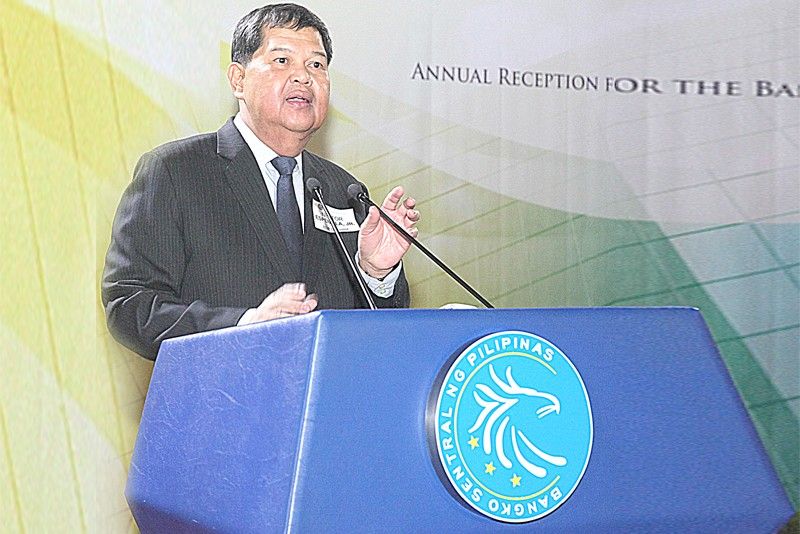BSP studies risk-based pricing for borrowers

MANILA, Philippines — The Bangko Sentral ng Pilipinas (BSP) is looking at a risk-based pricing of bank loans to reduce potential systemic risk from competitive pressures that may result in lower interest rates, even for customers with poor credit quality.
BSP Governor Nestor Espenilla Jr. said the adoption of the risk-based pricing framework for bank loans would help differentiate risks among bank borrowers.
“This will encourage good borrowers to avail of more loans because of the lower interest on account of their good credit standing,” Espenilla said, adding “the BSP fervently hopes to include all Filipinos into the financial system. To make banking services more accessible, we issued the framework for basic deposit accounts.”
The BSP chief said members of the Chamber of Thrift Banks (CTB) are expected to be at the forefront of opening basic deposit accounts.
“Part of our strategy is the deepening of financial education and consumer protection initiatives, as well as leveraging on available digital technology to have greater scale in banking,” Espenilla said.
Thrift, rural, cooperative, and quasi-banks are required to achieve liquidity standards to manage financial risks and maintain a sound banking system.
This, after the BSP approved the minimum liquidity ratio (MLR) on small banks parallel to a measure imposed on universal and commercial, or big banks, last February.
Under the new guidelines, small banks are required to keep liquid assets including cash on hand, other cash items, claims from the BSP, debt securities tagged with a zero risk weight, and deposits in other banks that could cover at least 20 percent of its total liabilities at any given time starting next year.
“We recently issued the minimum prudential liquidity requirements for stand-alone thrift banks and other small banks. The MLR will promote resilience to liquidity shocks,” Espenilla said.
The BSP earlier imposed the liquidity coverage ratio (LCR) on big banks, requiring them to hold high-quality and easily convertible assets to cover expected net cash outflows for a 30-day period.
Espenilla said the thrift banking industry has exhibited sustained stability, resilience and commitment to support inclusive growth as resources stood firmly at P1.17 trillion as of last year.
He said thrift banks continue to support micro, small and medium enterprises (MSMEs), real estate development, and consumer financing, with a loan portfolio equivalent to about 71 percent of industry assets.
Retained earnings boosted the industry’s overall capital position as the capital adequacy ratio (CAR) stood at 16.7 percent as of end-2017.
“This is higher than the BSP standard and the global norm. This is evidence of the industry’s commitment to build adequate buffers for risk-taking,” he said.
Likewise, the industry’s net income amounted to P17.9 billion, yielding a 12.7 percent return to shareholders.
- Latest
- Trending





























